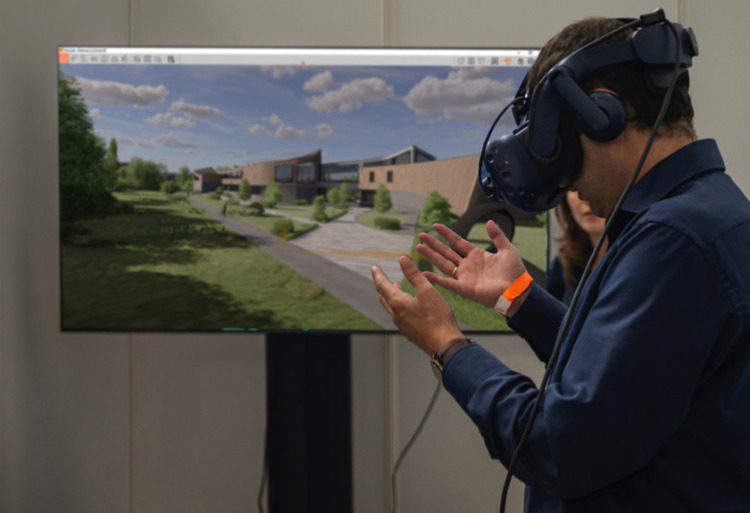A new technology concept is like a beauty from afar: when it first enters the capital market, it looks like a lady in the bathroom, the thicker the mist, the “sexier” the beauty. As we get closer, the eyebrows become clearer, and then the concept has to go through a real test and the valuation bubble starts to fade. The real value of the company will appear only after examination, and the investor of insights will eventually “win the beauty”.
In the recent industrial exchanges, the concept of metaverse has been initially popularized. More and more companies are thinking about how to participate in this new change of globalization with their own resources? And how to lay out their resources in an unknown field?
In fact, whether it is the Internet of early-stage or the mobile Internet in the Web2.0 era, the listed companies involved in it have all experienced such a process of ebb and flow. With the advent of the Web3.0 era, metaverse has undoubtedly become one of the most popular concepts in the field of Internet technology, and its development is undergoing a metamorphosis from hazy to clear. And the influx of global tech giants shows that the metaverse undoubtedly has great investment opportunities and provides jobs for millions of creators and developers.
This also indicates that the metaverse will generate more job opportunities and bring larger economic benefits in the coming years. The metaverse, the product of the post-Internet era, is created under the material basis of continuous iteration of AR/VR wearable devices, CPU/GPU hardware, 5G/AI/NFT/digital twin and other technologies and the continuous innovation of the blockchain industry, as well as the gradual improvement of the infrastructure of the protocol layer. With these key technologies, we can see its bright future.
The Metaverse: Continuous Innovation
Functionally, the metaverse is a platform that carries virtual activities and enables users to socialize, entertain, create, showcase, educate, trade and perform other social and spiritual activities. The core lies in its credible asset rights and social identities.
This replication of the underlying logic of the real world makes the metaverse a solid platform where any user can participate in creation and the fruits of labor are guaranteed. Based on this, there is no difference between people’s labor creation, production and trading in the metaverse and those in real life. For example, a virtual house built by a user in the metaverse can be easily traded without the restrictions of the platform and exchanged for other items in the metaverse or the real world, and the price of which is determined by the market.
The initial technology track to build the metaverse is summarized as “BAND”, i.e. Blockchain, Game, Network, and Display, which build the metaverse from the convergence of value interaction, content carrying, data network transmission, and immersive display, respectively.
(1) Blockchain technology provides a decentralized settlement platform and value transfer mechanism, which can guarantee the attribution and flow of the value of the meta-universe, thus guaranteeing the stability and efficiency of the economic system and the transparency and certainty of rules enforcement. The decentralized virtual assets can be circulated across platforms and separate from the content itself, and become more “real”.
(2) Video games provide interactive content for the metaverse and are the key track for content development and traffic. User creation has become the trend of metaverse game development, and it can provide rich content for metaverse. Users are not puppets in the hands of game planners and designers anymore like traditional games, and it is also changing people’s concept of virtual assets.
(3) The upgrade of network and arithmetic technology has guaranteed the transmission of information and computing power. 5G, AIoT, and arithmetic power have laid a solid foundation for next-generation application innovation. Cloud gaming has also achieved rapid development in recent years. Cloud computing is one of the fastest growing technology fields in recent years, and along with the continuous upgrade of communication rate and cloud computing power, cloud gaming has become a reality.
(4) Display technology provides ways of interaction. And UHD and AR/VR devices have been upgraded iteratively so that users can have a better immersive experience.
For this reason, the metaverse needs not only a grand narrative, but also polishing in each underlying technology, so as to realize the value of industry empowerment.
Tech giants enter the game, innovation is seen in comprehensive fields
Throughout the world, the metaverse industry has been developing rapidly since the first metaverse stock Roblox went public last March, attracting the market’s attention to the metaverse, along with the emergence of NFT and GameFi. Last October, at Facebook’s annual Connect conference, Zuckerberg gave a detailed and complete explanation of Facebook’s understanding of the metaverse, its strategic plan and the progress it has made in the metaverse field, and announced that it would officially change its name to Meta. Its logo was replaced with a new one similar to “Infinity”.
The metaverse has opened a whole new chapter as tech giants set foot in it. Microsoft acquired gaming giant Blizzard to lay out its metaverse. At the press conference, Microsoft CEO Satya Nadella expressed the view that games will play a key role in the development of the metaverse. Nvidia not only provides developers with the software to draw virtual worlds, but also the computing power needed to build them. Last year, Nvidia officially launched the Omniverse platform, a set of tools to help software developers build 3D virtual worlds and use more computing power from Nvidia chips in the process. And more recently, Musk has offered to buy Twitter for $43 billion. With Musk’s sense of innovation and the value of Twitter among young Web 3.0 users around the world, we believe that if the acquisition is completed, its imagination and industry-leading effect is expected to surpass Meta.
It is reported that the next major tech company to set foot in the metaverse is likely to be Amazon. The company’s recently released recruitment information revealed its intention to build “new smart home products” based on XR technology. Given that Amazon has a large number of smart home devices, Amazon may invest a lot in AR. You can imagine a scenario in which users wear Amazon AR glasses that can be interconnected with other Amazon devices and see everything that happens at home at a glance (this is obviously a step further than the current Amazon Echo Frames smart glasses). All signs indicate that Amazon is likely to use more creative design concepts to develop new AR/XR devices to complete the layout for the metaverse.
Google is partnering with the NBA to launch Google Pixel Arena, a metaverse project where fans can participate in NBA basketball with their own avatars. Google Pixel Arena will be available on the NBA app whenever games are on, and it is accessible to any smartphone with the NBA app. Users can have their virtual players explore the ballgame wearing the uniforms and accessories of their team of choice. In addition, Google and the NBA are partnering in the metaverse space, and Google Pixel has now become the official sponsor of the NBA.
However, in terms of technology breakthroughs, it is worth mentioning that the first share of metaverse holographic AR, WiMi Hologram Cloud(NASDAQ: WIMI). As a pioneer in the industry to lay out VR and AR technology, WIMI uses 3D creation engine for 3D modeling and space construction, which can help creators to quickly create panoramic content and enter the metaverse in a fast way. WIMI also founded the WIMI Hologram Academy, a move to better study the exploration, R&D, application and implementation of cutting-edge technologies in the field of metaverse, such as audio and video codec, network transmission and real-time communication, multimedia content processing and analysis, understanding and quality assessment based on signal processing and deep learning, immersive media (VR, AR, MR, etc.), system design and end-to-end solutions that enable users to create a seamless succession of experiences across scenes, adding to the metaverse and improving the ecosystem.
All signs indicate that the metaverse may accumulate from quantitative to qualitative changes in the future. From the investment point of view, metaverse will be the masterpiece of next-generation technology, and will gradually move from the initial “concept” to reality.


































